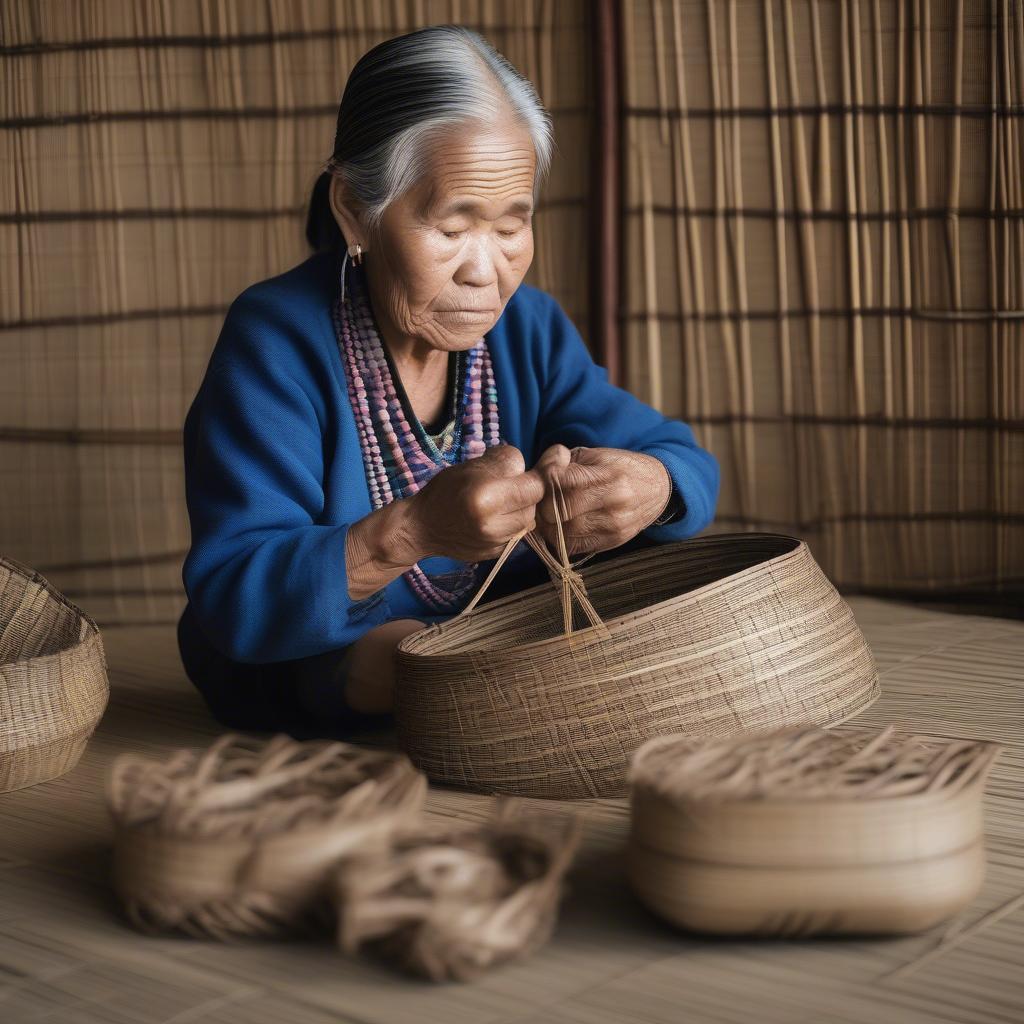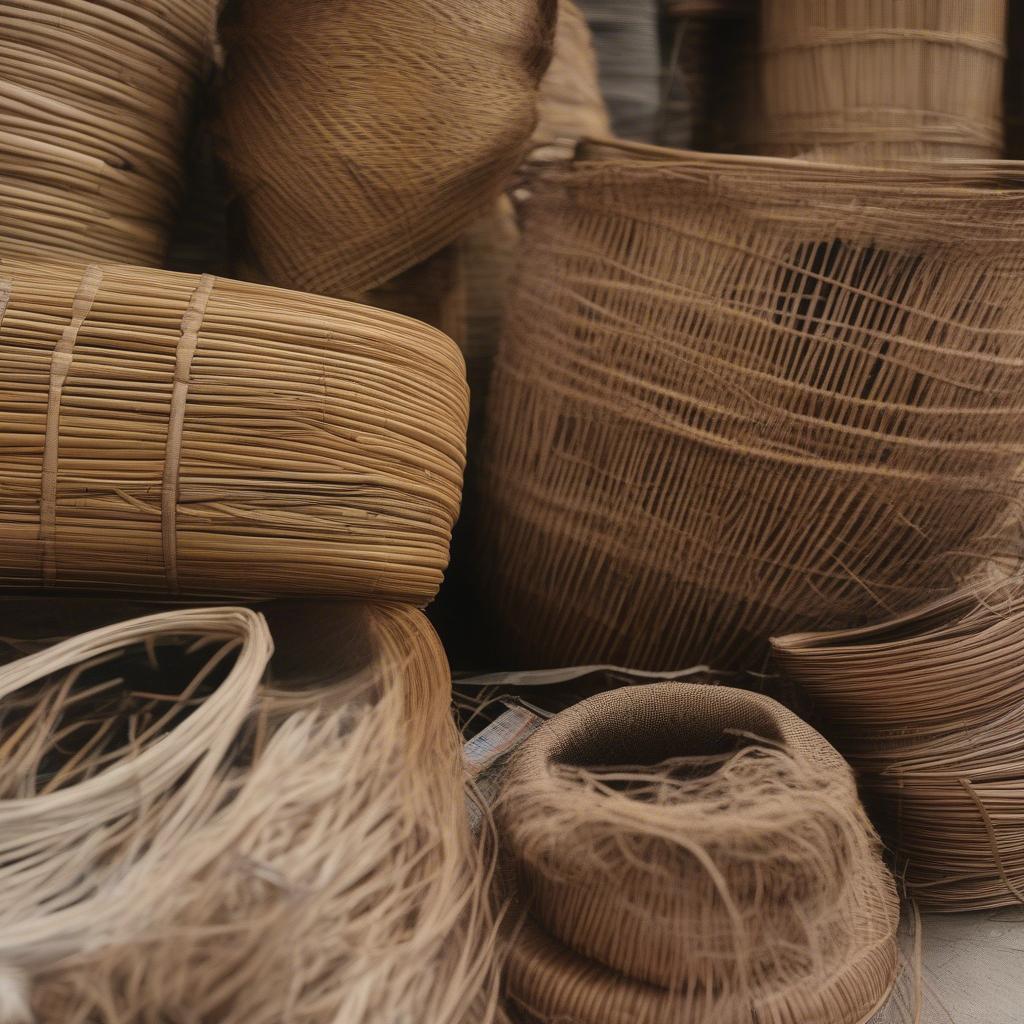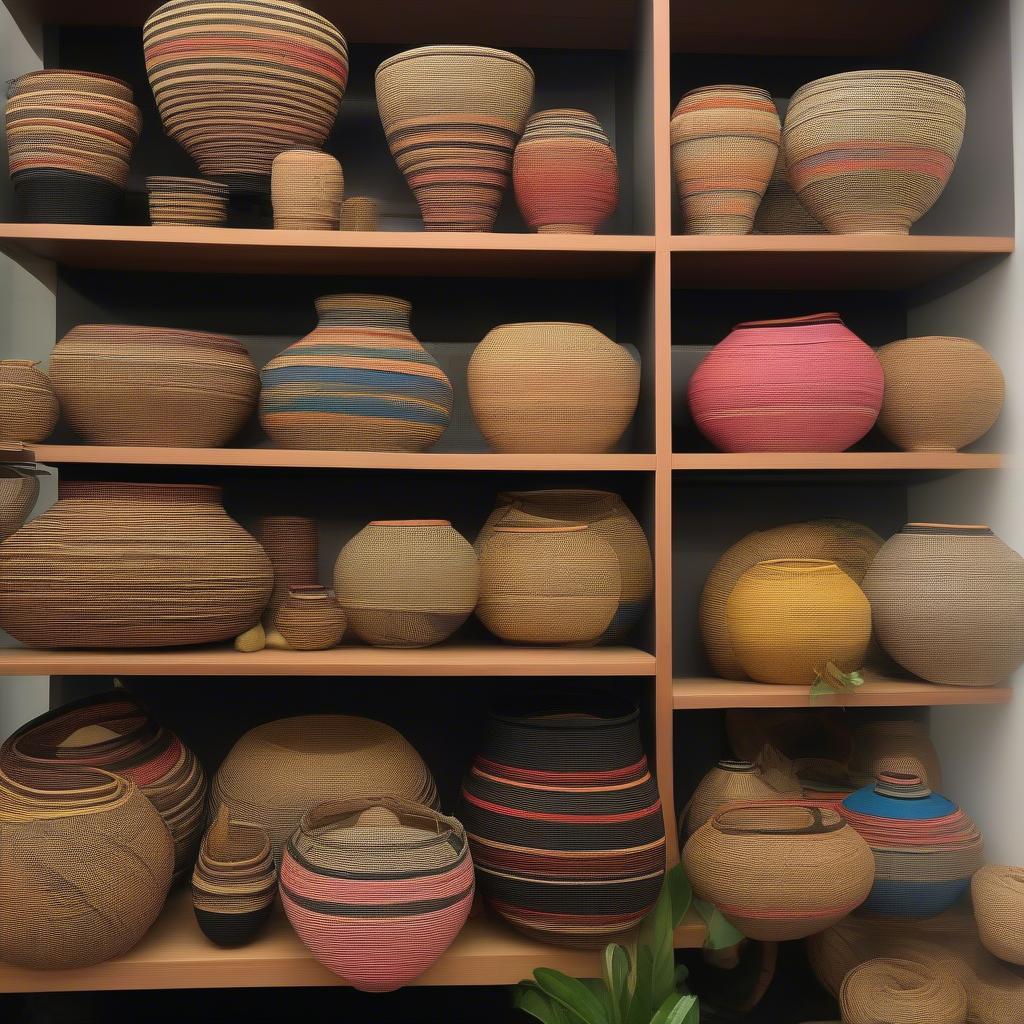Basket Weaving
Exploring the Intricate Art of Khmu Basket Weaving
Khmu Basket Weaving is a captivating tradition deeply rooted in the cultural heritage of the Khmu people, an ethnic group primarily residing in the mountainous regions of Laos, Vietnam, and Thailand. These meticulously crafted baskets are not merely functional objects; they are expressions of artistic skill, cultural identity, and a profound connection to the natural world. This article delves into the intricacies of Khmu basket weaving, exploring its history, techniques, materials, and significance in contemporary society.
A Legacy Woven Through Generations: The History of Khmu Basket Weaving
 Traditional Khmu basket weaving techniques demonstrated by an elder.
Traditional Khmu basket weaving techniques demonstrated by an elder.
For centuries, Khmu communities have relied on basket weaving for both practical and ceremonial purposes. Baskets serve as essential tools for harvesting crops, storing food, carrying goods, and even cradling infants. Beyond their utilitarian function, these woven masterpieces play a vital role in Khmu rituals, ceremonies, and social customs, symbolizing community bonds and spiritual beliefs. The knowledge and skills of basket weaving are traditionally passed down through generations, with mothers and grandmothers patiently teaching young girls the intricate techniques. This intergenerational transmission ensures the preservation of this valuable cultural heritage.
Unveiling the Secrets: Materials and Techniques of Khmu Basket Weaving
 Natural materials used in Khmu basket weaving: bamboo, rattan, and forest vines.
Natural materials used in Khmu basket weaving: bamboo, rattan, and forest vines.
Khmu basket weavers are renowned for their resourcefulness and intimate knowledge of their natural surroundings. They primarily utilize readily available materials such as bamboo, rattan, and various forest vines. Bamboo, known for its strength and flexibility, forms the structural framework of the baskets. Rattan, a climbing palm, provides the supple material for weaving intricate patterns and designs. Forest vines, carefully selected for their durability and color, add decorative accents and reinforce the basket’s structure. The process of preparing these materials is as crucial as the weaving itself. Bamboo is carefully split, dried, and soaked to enhance its pliability. Rattan is meticulously stripped, cleaned, and coiled for ease of use. The preparation process often involves traditional tools and techniques passed down through generations.
The Khmu employ a variety of weaving techniques, each resulting in unique textures and patterns. Coiling, twining, and plaiting are among the most common methods. Coiling involves wrapping a continuous foundation material with another material, creating a spiral structure. Twining and plaiting involve interlacing multiple strands to form a tight and durable weave. These techniques require remarkable dexterity, patience, and an artistic eye.
Khmu Basket Weaving in the Modern World: Preservation and Evolution
 Contemporary Khmu basket designs incorporating modern elements and colors.
Contemporary Khmu basket designs incorporating modern elements and colors.
While traditional Khmu basket weaving remains deeply embedded in cultural practices, it has also adapted to the demands of the modern world. Today, Khmu artisans are exploring new designs, incorporating vibrant colors, and experimenting with different materials to cater to a wider audience. This evolution allows them to generate income while preserving their cultural heritage. However, challenges remain, including competition from mass-produced goods and the need to maintain sustainable harvesting practices.
Conclusion
Khmu basket weaving is more than just a craft; it is a living testament to the rich cultural heritage of the Khmu people. From its practical applications to its symbolic significance, basket weaving remains an integral part of Khmu identity. By supporting Khmu artisans and appreciating their exquisite creations, we contribute to the preservation of this unique art form for generations to come. Explore the world of Khmu basket weaving and discover the beauty and artistry woven into each strand.
FAQ
-
What are Khmu baskets made of?
Khmu baskets are primarily made from bamboo, rattan, and forest vines. -
What are the different types of Khmu baskets?
Khmu baskets vary in size, shape, and design, depending on their intended use. Some common types include carrying baskets, storage baskets, and ceremonial baskets. -
How long does it take to make a Khmu basket?
The time required to weave a Khmu basket depends on its size, complexity, and the skill of the weaver. It can range from a few days to several weeks. -
Where can I buy authentic Khmu baskets?
Authentic Khmu baskets can often be purchased directly from artisans in Khmu communities or through fair trade organizations. -
Are Khmu baskets sustainable?
Traditional Khmu basket weaving utilizes natural and renewable materials. However, sustainable harvesting practices are crucial to ensure the long-term viability of this craft. -
What is the cultural significance of Khmu basket weaving?
Khmu basket weaving is deeply intertwined with cultural identity, social customs, and spiritual beliefs. Baskets play a vital role in rituals, ceremonies, and everyday life. -
How can I learn more about Khmu culture?
There are various resources available to learn more about Khmu culture, including books, documentaries, and ethnographic museums.
Would you like to explore other related topics such as traditional weaving techniques in Southeast Asia or the sustainable use of natural materials in crafts?
When you need assistance, please contact us at Hanoi, Vietnam or Tech Avenue, Suite 12, San Francisco, CA 94105, USA. We have a 24/7 customer service team.
